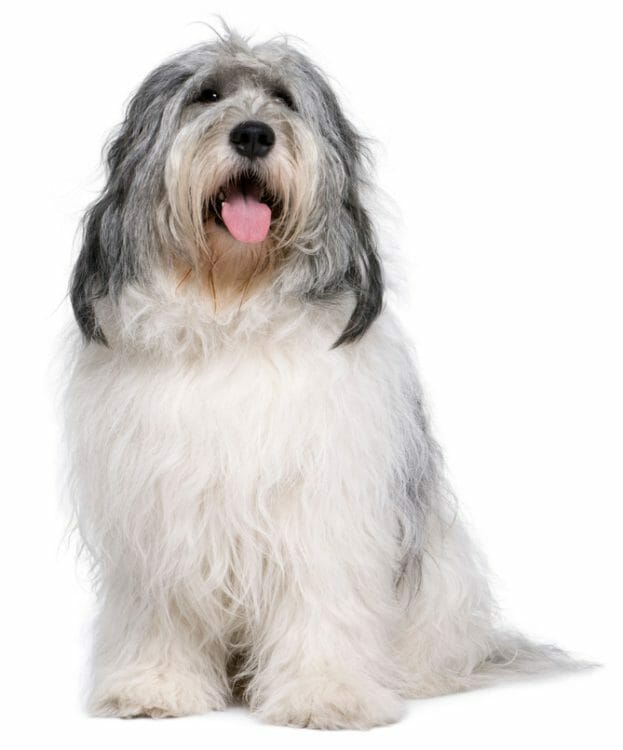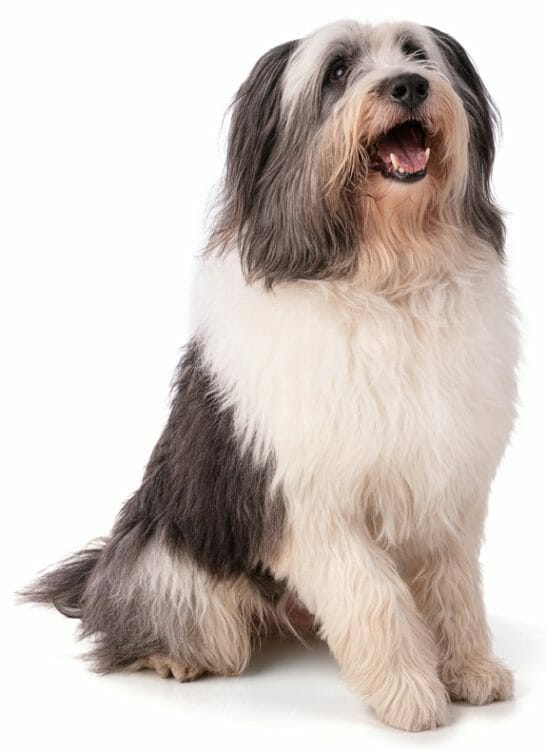Polish Lowland Sheepdog

History of the Polish Lowland Sheepdog
The Polish Lowland Sheepdog (also known as the Polski Owczarek Nizinny or PON) in its native Poland, can trace its present form back as far as the 13th century. Believed to be descended from the Tibetan Terrier, the Puli, and a variety of other herding dogs, the breed may share a common ancestor with the Bearded Collie.
Polish sailors are said to have traded PONs for other animals during visits to Scotland in the 16th century. This indicates that the PON may have been used as a starting point for some of the traditional sheepdogs found in the United Kingdom.
As with many historic European breeds, World War II nearly drove the Polish Lowland Sheepdog to extinction. The breed’s restoration is predominantly due to the efforts of Dr. Danuta Hryniewicz. Dr. Hryniewicz’s dog Smok sired no less than ten litters during the 1950s. All the Polish Lowland Sheepdogs in existence today are descended from Smok.
Fortunately, Smok was an excellent example of the breed both in terms of anatomy and personality. Smok is widely regarded as the father of the modern Polish Lowland Sheepdog. Smok was used when defining the official breed standard. The standard was accepted by the Federation Cynologique Internationale in 1959. Although relatively rare in the United States, the American Kennel Club formally recognized the Polish Lowland Sheepdog in 2001 as a part of the Herding Group.

Polish Lowland Sheepdog Personality
As with many other loyal herding dogs, the Polish Lowland Sheepdog is a quick learner that displays remarkable intelligence. These natural watchdogs and herders enjoy any training provided by their owners. These canines work well alongside humans when a good relationship built on positive reinforcement is put in place early in the dog’s life.
The Polish Lowland Sheepdog is known for its fantastic memory. This makes training a Polish Lowland Sheepdog fairly easy. However, an inexperienced owner or handler may be overpowered by this strong-willed dog, so confident commands must always be given.
As an active working dog, the PON requires a considerable amount of exercise. Regular walks and access to toys and puzzle feeders will help ensure the dog burns off any extra energy it has.
The PON is both friendly and affectionate to family and friends. However, they can be reserved around strangers. To help minimize anxiety around new people, early socialization is vital. Enrolling in puppy training classes, taking walks in busy dog parks, and introducing young pups to new people and animals will help build their confidence.
Polish Lowland Sheepdogs do not enjoy spending time away from their family unless they have a task to keep them busy. As with many working dogs, boredom can set in quickly when the right environment and enrichment techniques are not put in place. A bored PON will be more prone to exhibit destructive or unwanted behavior.

Polish Lowland Sheepdog Appearance
Polish Lowland Sheepdogs are muscular canines with a thick coat. Their double coat was developed to allow them to work in the fields guarding and herding livestock regardless of the weather conditions. A PON’s coat can be any pattern or color.
Common coat colors include gray, brown, and white. Most coats will also include gray, brown, or black markings. The coat colors of Polish Lowland Sheepdog puppies will often fade as they reach maturity.
The dense, soft undercoat of these canines is covered with a rough topcoat. This topcoat can be wavy or straight but will never be curly. The large crop of hair surrounding the dog’s head that covers the eyes makes the head seem larger than it is.
Female Polish Lowland Sheepdogs range from 17 to 19 inches tall and weigh around 30 to 40 pounds. Their male counterparts stand at 18 to 20 inches and weigh between 40 and 50 pounds.
The almost square body of these dogs appears to be rectangular in shape given the density of the coat on the rear and the chest. In the United States, the tail will often be short or docked. However, in Europe, the practice of docking is banned. As a result, the PON may have any length of tail.

Polish Lowland Sheepdog Health
The typical life expectancy of a Polish Lowland Sheepdog is approximately 12 years. Overall, the breed is largely free from genetic health concerns. Most PONs will live a long and healthy life.
Regular check-ups at the veterinarian’s office are recommended. Providing all recommended vaccines (such as those for rabies and parvo) will also help to keep a PON healthy. GoodPooch also recommends providing preventive medication for fleas, ticks, and heartworm. This will prevent issues with flea infestations and Lyme disease.
Despite their overall propensity for good health, the Polish Lowland Sheepdog may be affected by hip dysplasia or Progressive Retinal Atrophy.
Hip Dysplasia
One common health issue that affects breeds of the PON’s size is hip dysplasia. This occurs while the dog is still growing and can cause lameness and arthritis.
Hip dysplasia occurs when the ball and socket of the dog’s hip joint develop at different rates. When these elements are not proportionate to each other, it can cause friction on the joint. Over time, this leads to a deterioration of the bones.
Early screening by a veterinarian will identify the signs of this condition before it develops into a problem. In many cases, surgery is the best treatment option.

Progressive Retinal Atrophy (PRA)
PRA is a degenerative condition affecting the cones and rods in a dog’s eyes. As PRA progresses, it leads to blindness. Often referred to as retinal dysplasia, this condition can be identified early while a puppy is still very young. Late-onset PRA can develop between the ages of three and nine years of age.
Although initially hard to detect, the first symptom of PRA usually identified is night blindness. Over the next two years, the condition of the dog’s eyes will deteriorate further and will begin to affect daytime vision. Eventually, the dog will become completely blind. There are no known treatments or cures for this condition.

Finding a Polish Lowland Sheepdog for Sale
Before approaching Polish Lowland Sheepdog breeders with a view to buying a puppy, it is important to always check local shelters and rescues first. By adopting from a Polish Lowland Sheepdog rescue, a good home can be provided to an animal that really needs one. When looking for a Polish Lowland Sheepdog for adoption, always search for a no-kill shelter as these will never euthanize a healthy animal.



